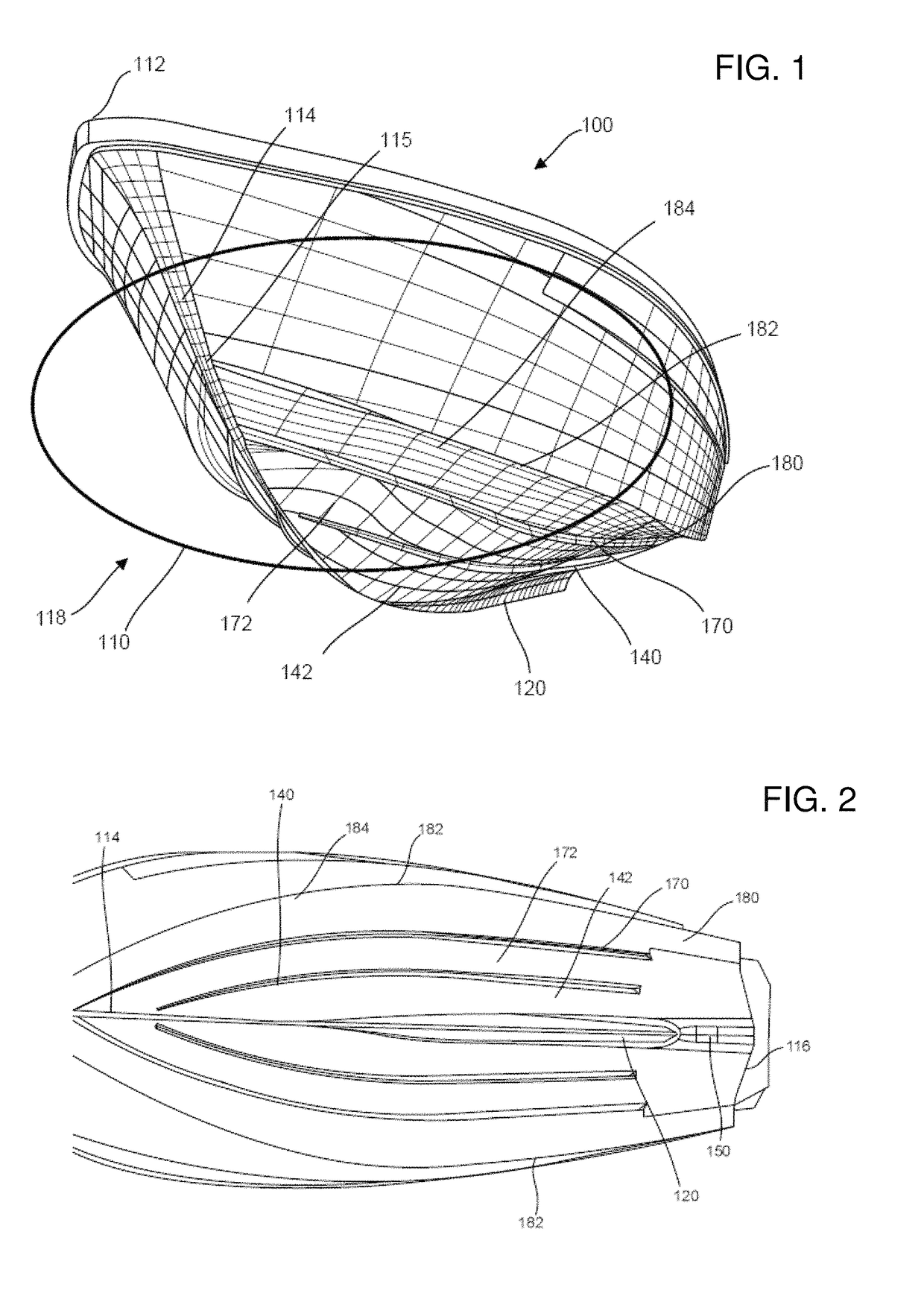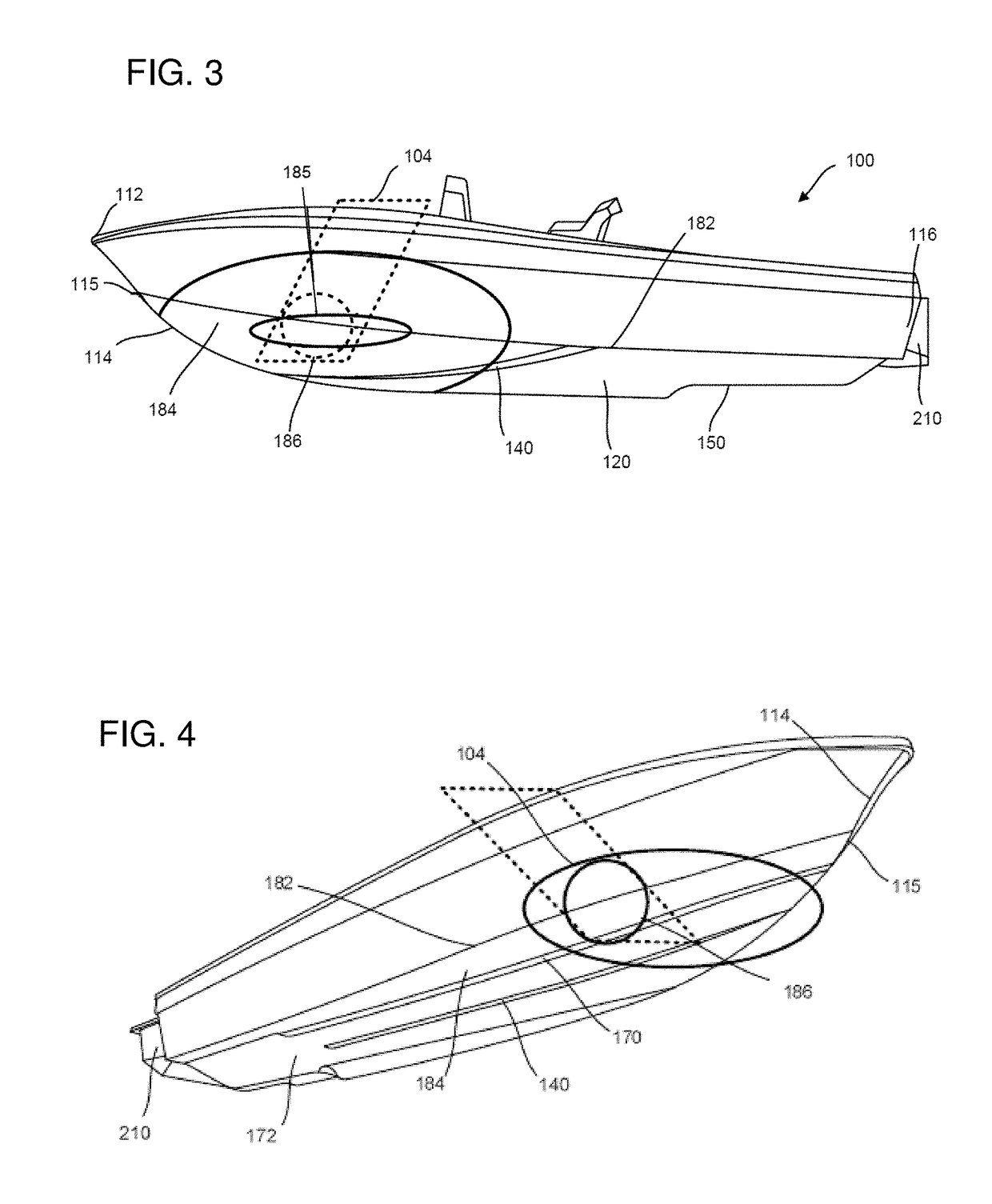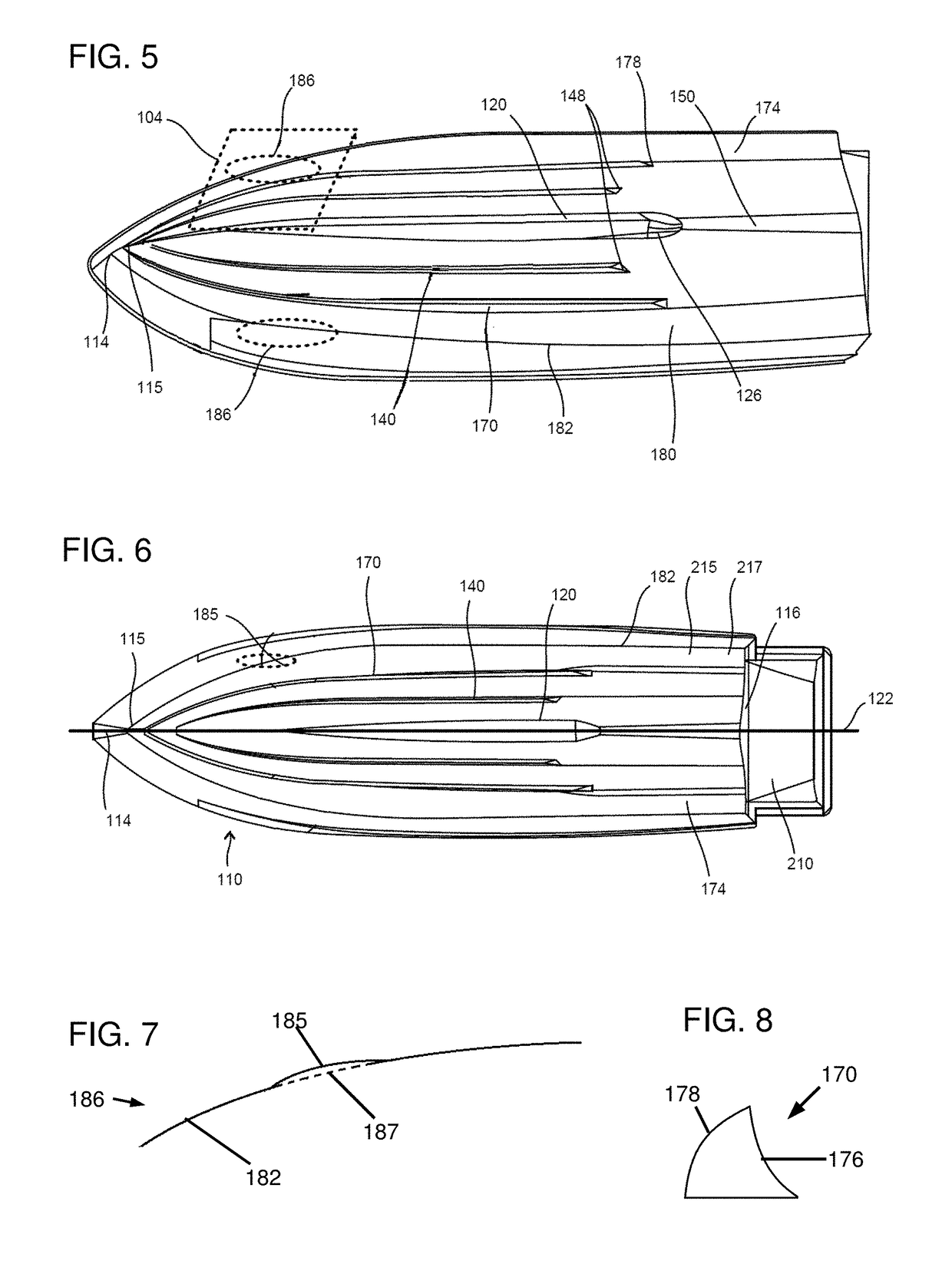High stability low drag boat hull keel having inverted foil configuration
a low-drag, high-strength technology, applied in the field of boats, can solve the problems of low horsepower motors, narrow bow area, rough ride, etc., and achieve the effect of good fuel economy and maneuverability
- Summary
- Abstract
- Description
- Claims
- Application Information
AI Technical Summary
Benefits of technology
Problems solved by technology
Method used
Image
Examples
Embodiment Construction
[0057]Before explaining at least one embodiment of the invention in detail, it is to be understood that the invention is not limited in its application to the details of construction and to the arrangements of the components set forth in the following description or illustrated in the drawings. The invention is capable of other embodiments and of being practiced and carried out in various ways. Also, it is to be understood that the phraseology and terminology employed herein are for the purpose of description and should not be regarded as limiting.
[0058]Disclosed is a hull design that improves the stability of a boat at low speed and efficiency at high speed. The forward region of the hull may have a bulbous, i.e. ellipsiodal, area that may be centered around the chine within the impact zone of the boat. The impact zone is the area or region of the hull impacted by water projecting upward due to the hull moving through water and is generally in a region extending from about 15% to a...
PUM
| Property | Measurement | Unit |
|---|---|---|
| dead rise angle | aaaaa | aaaaa |
| dead rise angle | aaaaa | aaaaa |
| aspect ratio | aaaaa | aaaaa |
Abstract
Description
Claims
Application Information
 Login to View More
Login to View More - R&D
- Intellectual Property
- Life Sciences
- Materials
- Tech Scout
- Unparalleled Data Quality
- Higher Quality Content
- 60% Fewer Hallucinations
Browse by: Latest US Patents, China's latest patents, Technical Efficacy Thesaurus, Application Domain, Technology Topic, Popular Technical Reports.
© 2025 PatSnap. All rights reserved.Legal|Privacy policy|Modern Slavery Act Transparency Statement|Sitemap|About US| Contact US: help@patsnap.com



